Switzerland is home to a fascinating mosaic of places of worship: Romanesque churches with stone dating back thousands of years, Gothic cathedrals reaching for the sky, monasteries with carefully tended gardens and a warm welcome, chapels and sanctuaries nestling in the intimacy of the mountains or forests. Among these places of pilgrimage are Buddhist and Hindu temples bursting with colour, as well as mosques – all havens of peace where the Spirit breathes.
These sacred spaces are refuges of serenity, where time seems suspended. You go there to light a candle, to reconnect with what's essential, with the divine, or simply with that silent part of yourself. Within their walls, serenity settles in, inspirations are born, and sometimes, in an exchanged glance or shared silence, a stranger suddenly seems familiar.
Far from the hustle and bustle of everyday life, these places offer a unique interlude. They recharge the soul and invigorate the heart. Sacred spaces offer us a precious gift: the tranquillity that regenerates, and the light that continues to shine in our hearts.
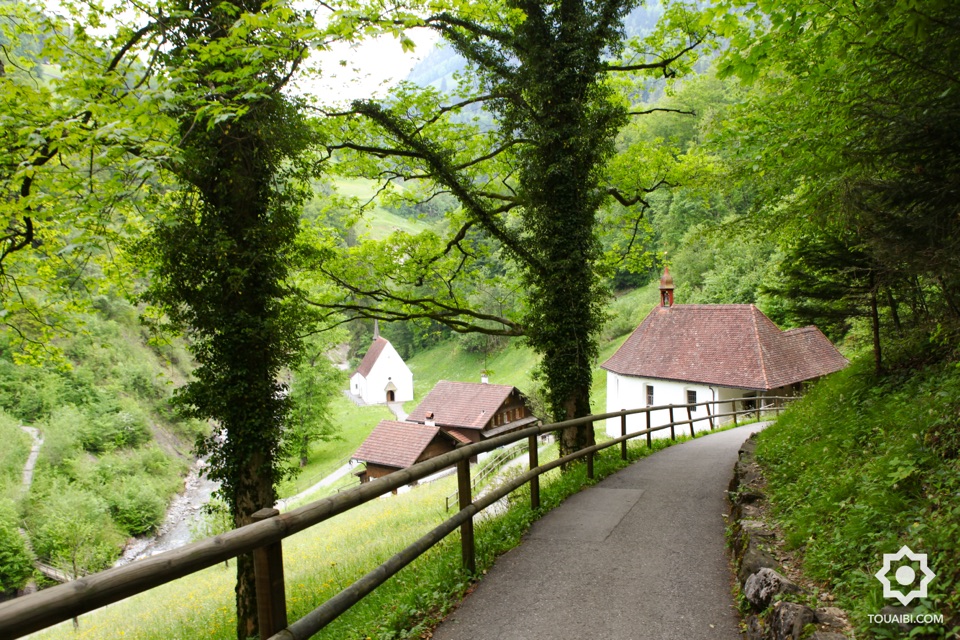
About
Flüeli-Ranft, one of Switzerland's most important places of pilgrimage, was the home of St Nicholas of Flüe (d. 1487). After raising ten children with his wife Dorothea, he retired at the age of 50 to a hermit's cell – still visible today, attached to the chapel. This unspoilt place, where simplicity and spirituality mingle, perpetuates the hermit's legacy, as well as his role as a political mediator. From the surrounding forests to the crystal-clear waters of the river, the whole site is bathed in a timeless serenity. Considered the patron saint of Switzerland since 1947, St Nicholas de Flüe continues to inspire visitors with his example of peace and devotion.
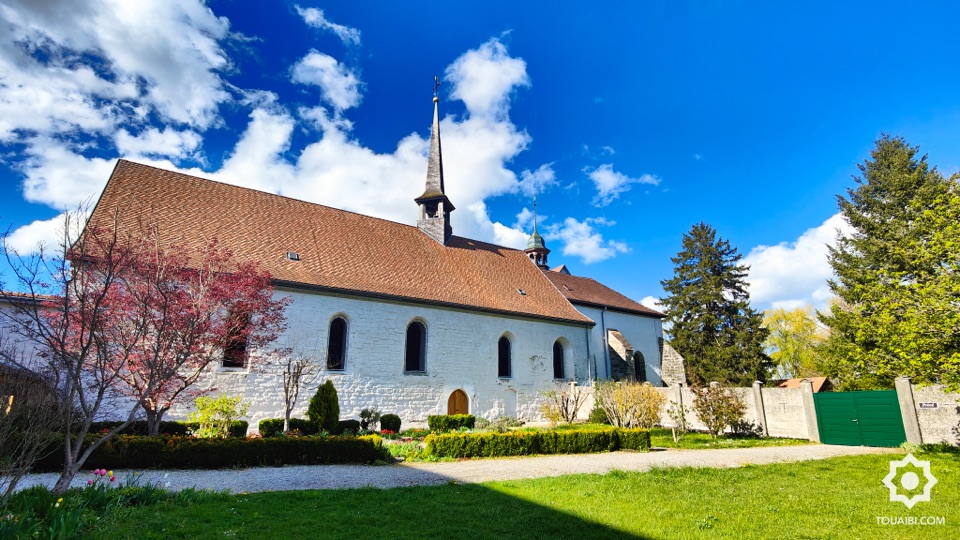
About
The Cistercian abbey of La Fille-Dieu, in Romont (FR), is a spiritual Mecca. It is one of the few monasteries in Europe where prayer has been recited without interruption for 750 years. The abbey church, which is open to all, is a place of meditation where the community meets six times a day and once at night for the liturgy.
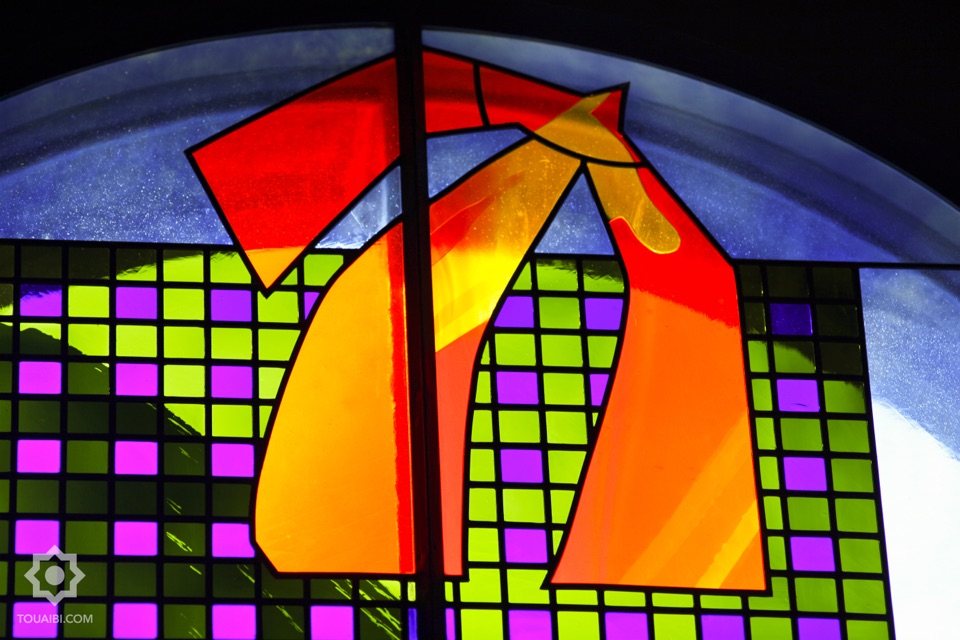
About
Stained glass window by Brian Clarke, considered to be the greatest living master of the art of stained glass (The Guardian), at the Cistercian abbey of La Fille-Dieu, Romont (FR). Between 1995 and 1996, the British artist created a series of 15 daring stained-glass windows for this 13th-century sanctuary – a revolutionary tribute to the Cistercian tradition. The glass follows the path of the sun, transforming the light into a visual score for the nuns' services. A work hailed as one of the jewels of contemporary European religious heritage.
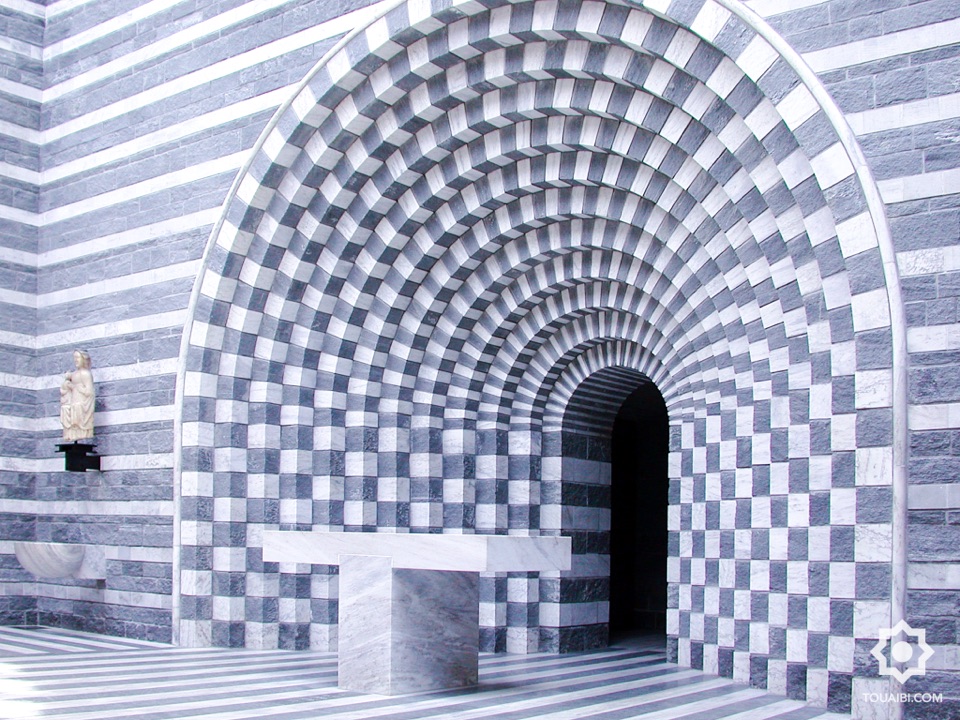
About
The Church of St John the Baptist in Mogno, perched in the Ticino Maggia valley, is an extraordinary place. Rebuilt by Mario Botta after an avalanche swallowed up the old 16th-century sanctuary, it emerges like a miracle of stone and light. Its glass roof transforms the modest space into a mineral cathedral, bathed in vibrant, generous light. The white marble and granite, quarried nearby, contribute to this alchemy of Alpine ruggedness and almost mystical purity. It's a stopover that will leave as lasting an impression as the landscape itself.
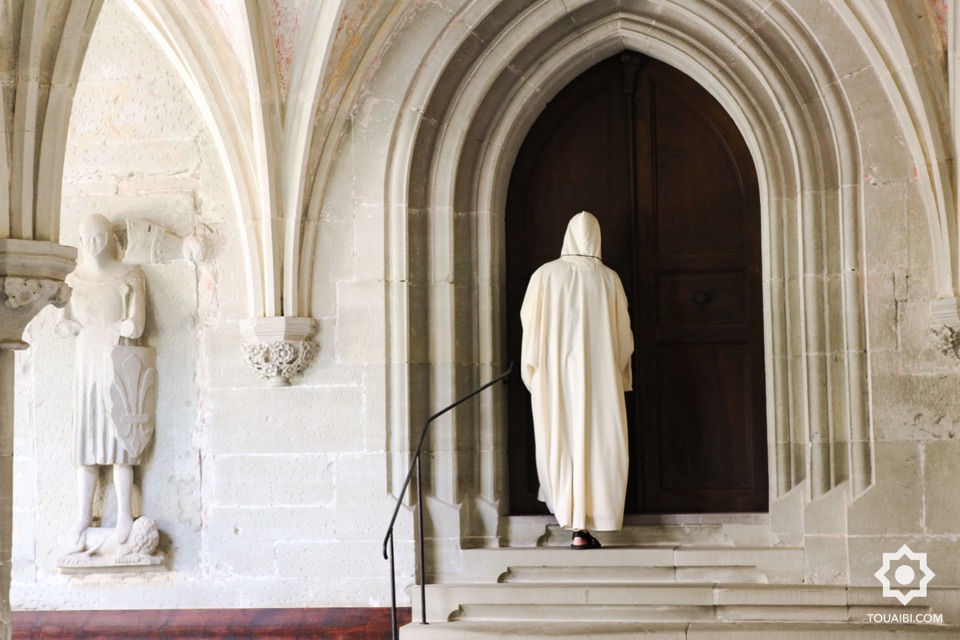
About
The Cistercian abbey of Hauterive was founded in 1138. It is a spiritual Mecca in the canton of Fribourg, where monks and visitors have been meditating for almost nine centuries. It is an architectural masterpiece, combining Romanesque and Gothic styles, and a haven of peace in an enchanting setting on the banks of the Sarine. It is the oldest surviving Cistercian abbey in Switzerland, home to a living community that follows the rule of Saint Benedict. Nestling in the heart of unspoilt countryside, it offers individual retreats for those seeking contemplation. Situated 7 km from Fribourg, it invites you to meditate and discover its exceptional historical heritage.
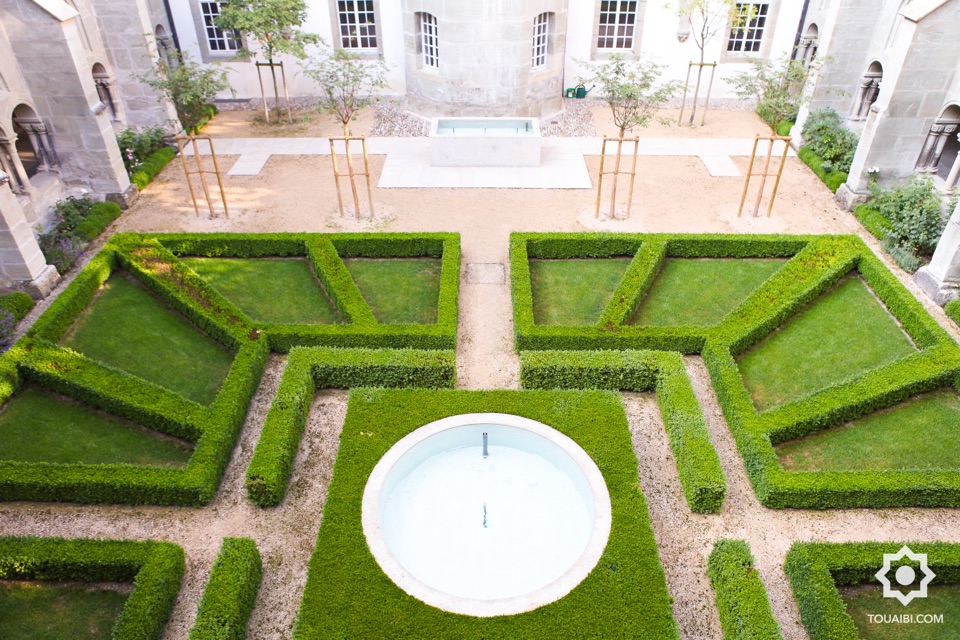
About
The courtyard of the cloister at Hauterive Abbey (Fribourg) was restored in 2006, reinstating the ablutions fountain in its original location. Inspired by the vision of Saint Bernard, the courtyard evokes Paradise, with its trees (apple, Japanese cherry), medieval plants (roses, lavender, boxwood) and a pool symbolising the union of Heaven and Earth. The yellow limestone gravel adds light and contrast, reminiscent of Cistercian sobriety. This architectural masterpiece, nestling on the banks of the Sarine, is a haven of peace where time seems suspended between stones and prayers.
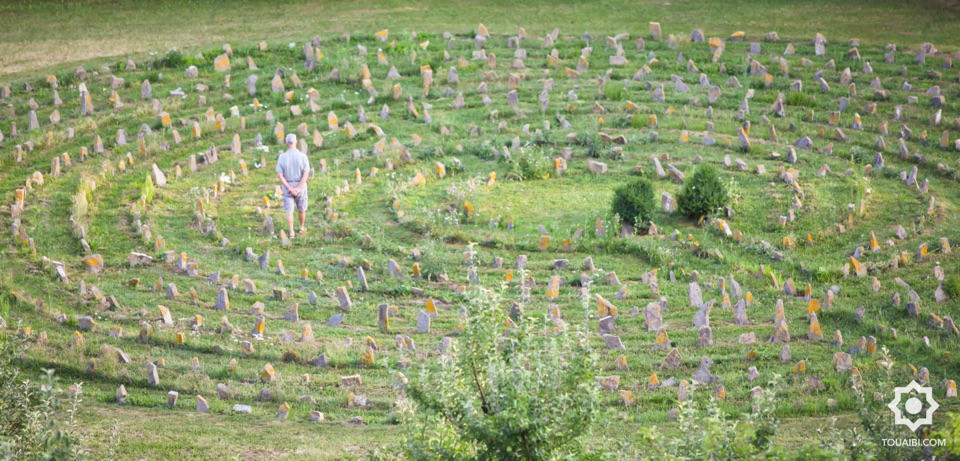
About
The labyrinth at the Jesuit spiritual centre of Notre-Dame de la Route, in Villars-sur-Glâne near Fribourg. A symbol steeped in history, traces of which go back more than five thousand years, labyrinths appeared as early as the XIIe century in Gothic cathedrals in France. At the time, walking through them had a symbolic value, equivalent to a pilgrimage to Jerusalem. Inspired by the labyrinth in Chartres Cathedral, the labyrinth measures 27 metres in diameter and stretches along a 556-metre path. It's an ideal place for meditation and refocusing.
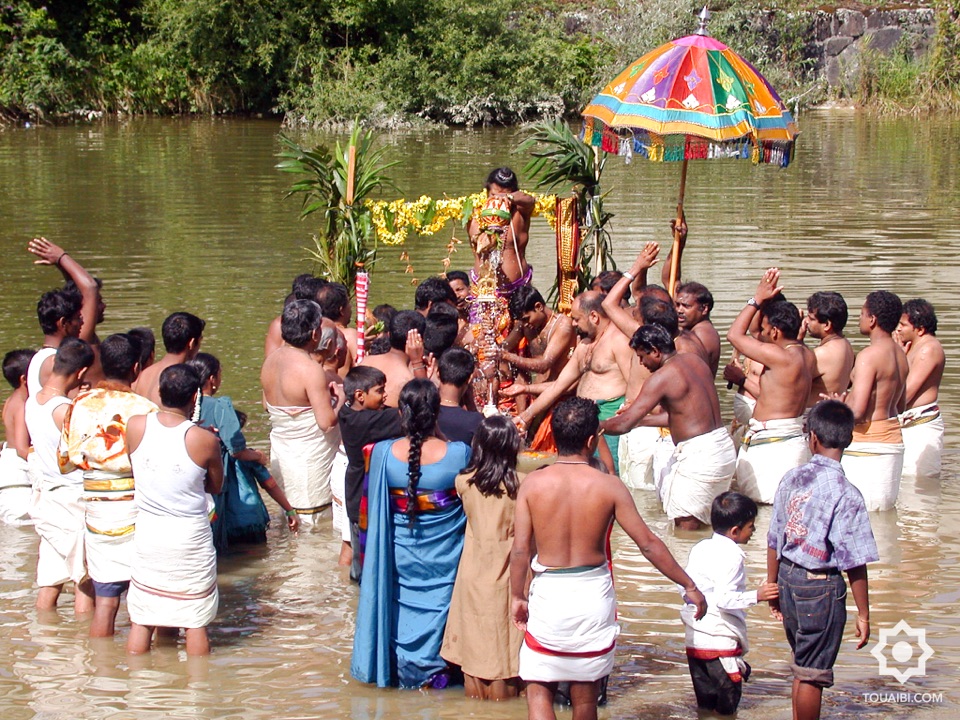
About
Annual ceremony at the Sri Sivasubramaniar temple. The first and largest Hindu temple in Switzerland, near Zurich, celebrates and preserves Sri Lankan Tamil culture. On 22 August 2004, a priest specially flown in from England conducted the rituals, perpetuating tradition and spirituality.
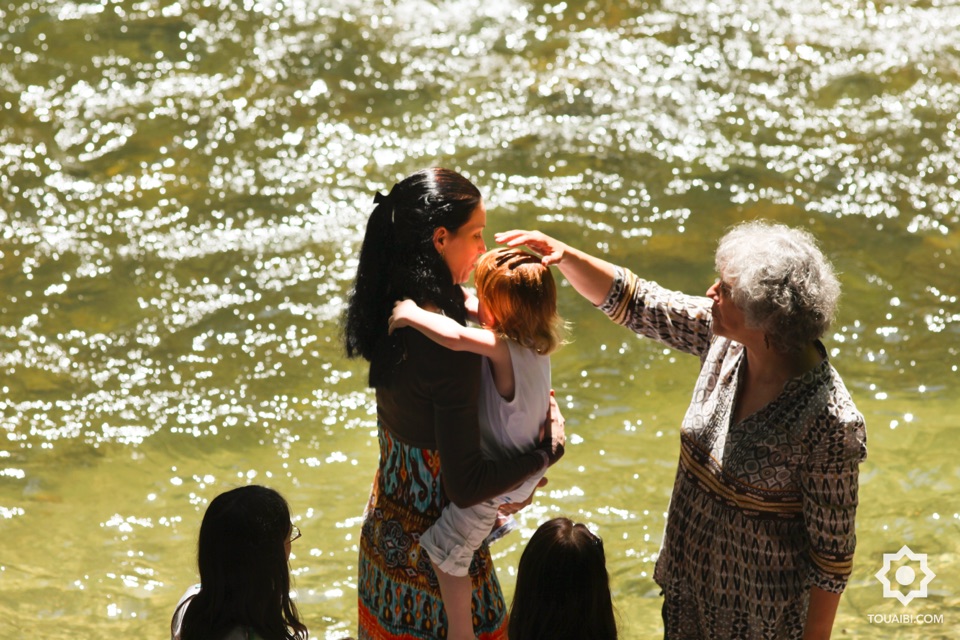
About
Baptism in the river near Sainte-Appoline. An annual ritual, presided over by a woman pastor, where water, the source of life, unites Christian tradition and communion with nature.
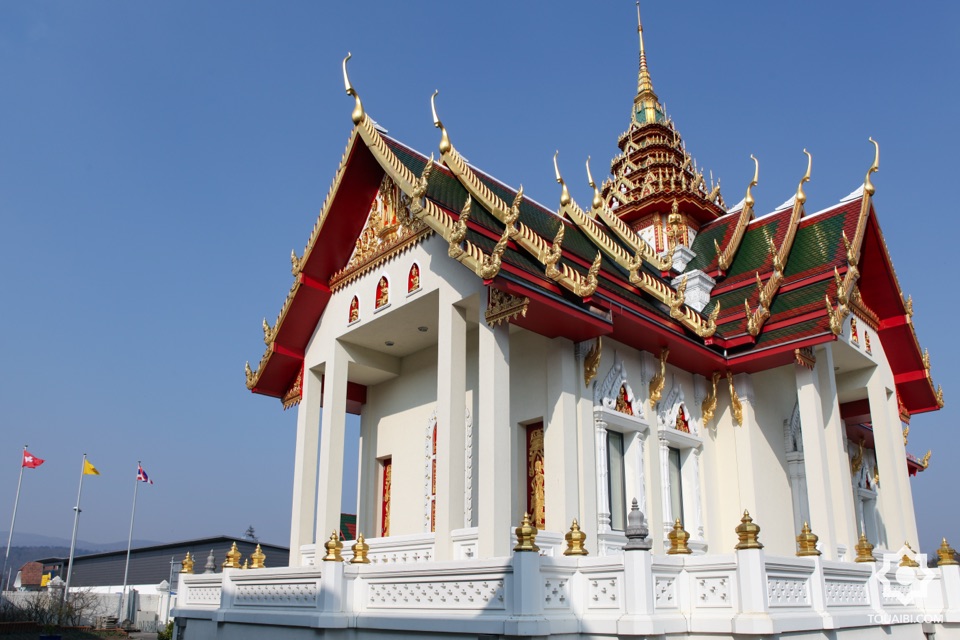
About
Wat Srinagarindravararam Buddhist temple. Located in Gretzenbach in the canton of Solothurn, this architectural gem – the largest Thai Buddhist centre in Europe – was inaugurated on 29 June 1996. A subsidiary of the famous Wat Benchamabopitr (Bangkok's marble temple), it bears the name of Princess Mother Srinagarindra of Thailand, who was highly respected for her support of religious and social causes. A place of permanent monastic life, it vibrates to the rhythm of traditional festivals.
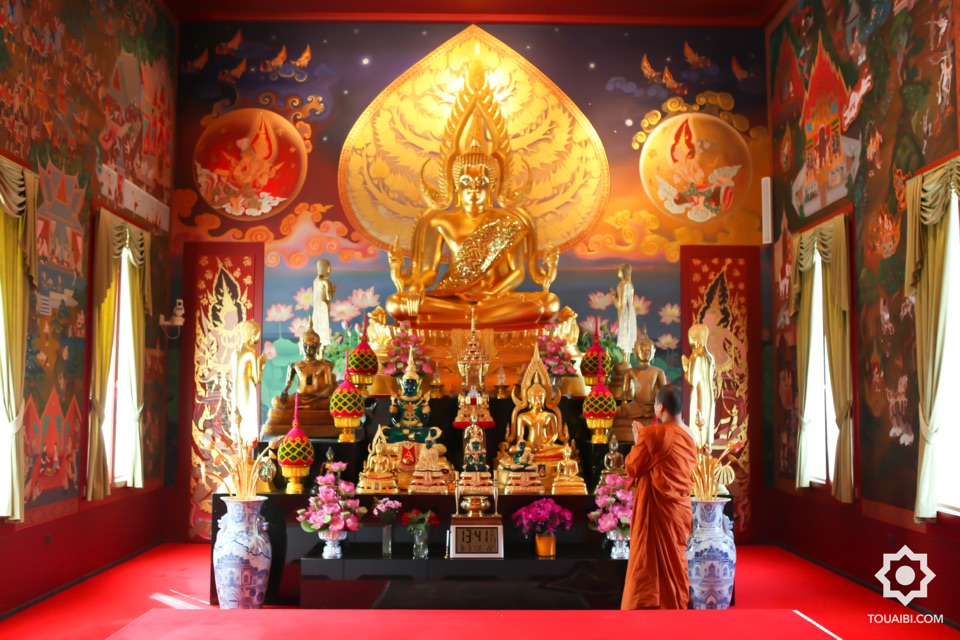
About
Inside the Wat Srinagarindravararam Thai Buddhist Temple, the only one of its kind in Switzerland.
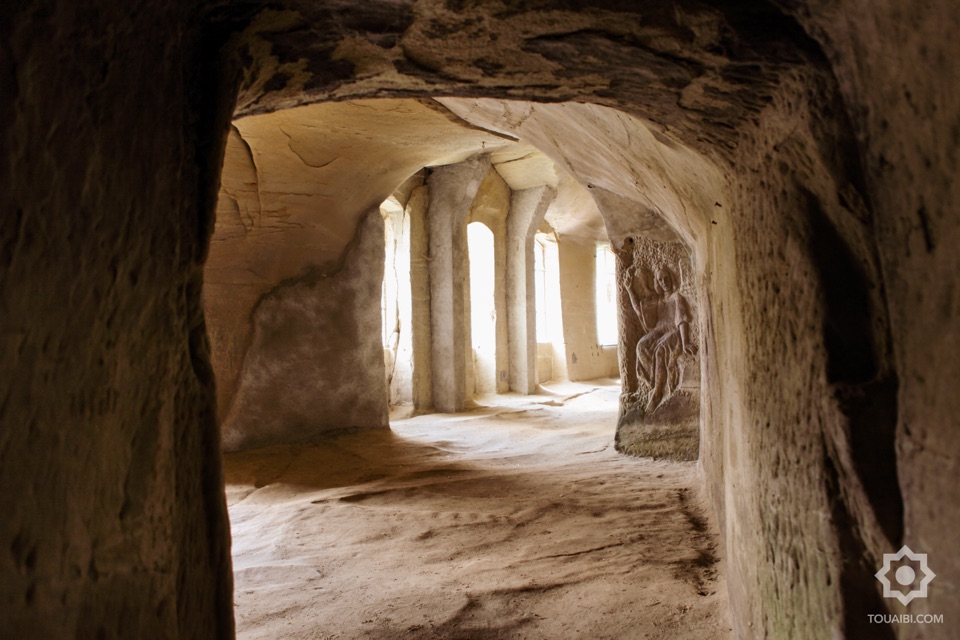
About
The Madeleine hermitage, at Räsch near Guin. Excavated as early as 1680, this site has seen its original structures reappear under the effect of erosion, revealing ancient sand dunes. These remains bear witness to the existence of a sea that covered the Fribourg region around 20 million years ago. The cave is 120 metres long and houses several areas, including a small chapel. Open free of charge from April to September, this hermitage offers an unusual escape between history, geology and spirituality.
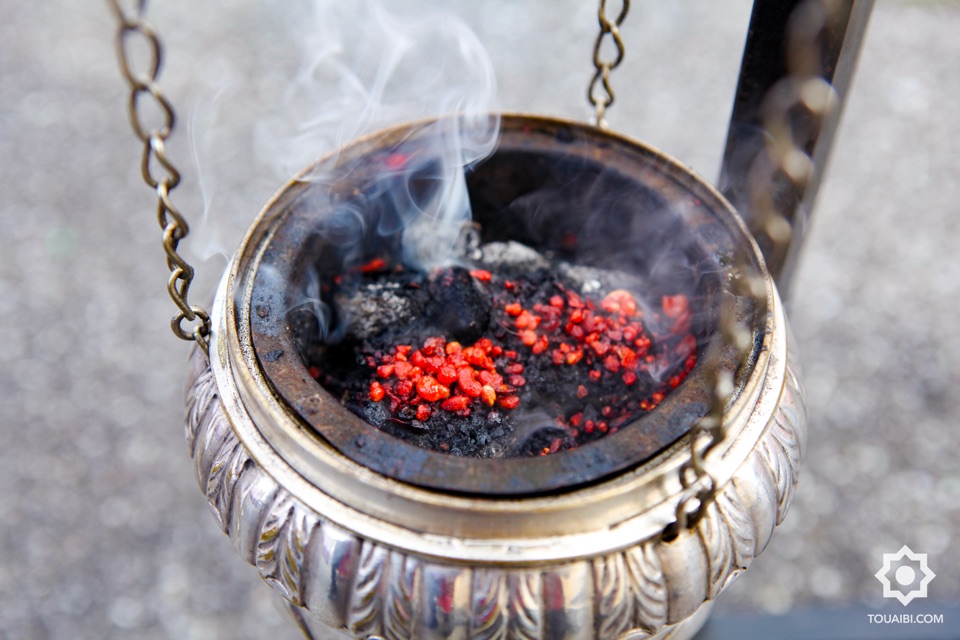
About
For millennia, the smoke of incense has risen to the sky, charged with sacred symbolism. A purveyor of places and souls, dispelling dark energies, it becomes a prayer and offering that unites the earthly with the divine. Its fragrance, enveloping and mysterious, is a gentle reminder of impermanence – fleeting as the instant, eternal as the sacred. Incense transcends religions: from Buddhist temples to Gothic cathedrals, its silent language unites humanity in a common aspiration for peace.
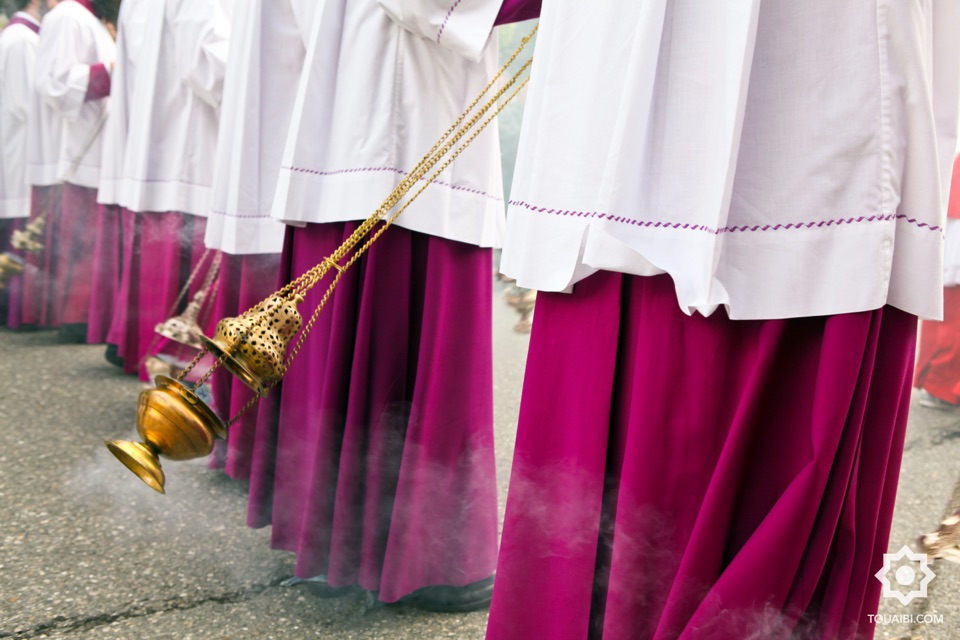
About
The Grand Clerics of Fribourg's St-Nicolas Cathedral, during the Corpus Christi procession on May 30, 2013 in Fribourg.
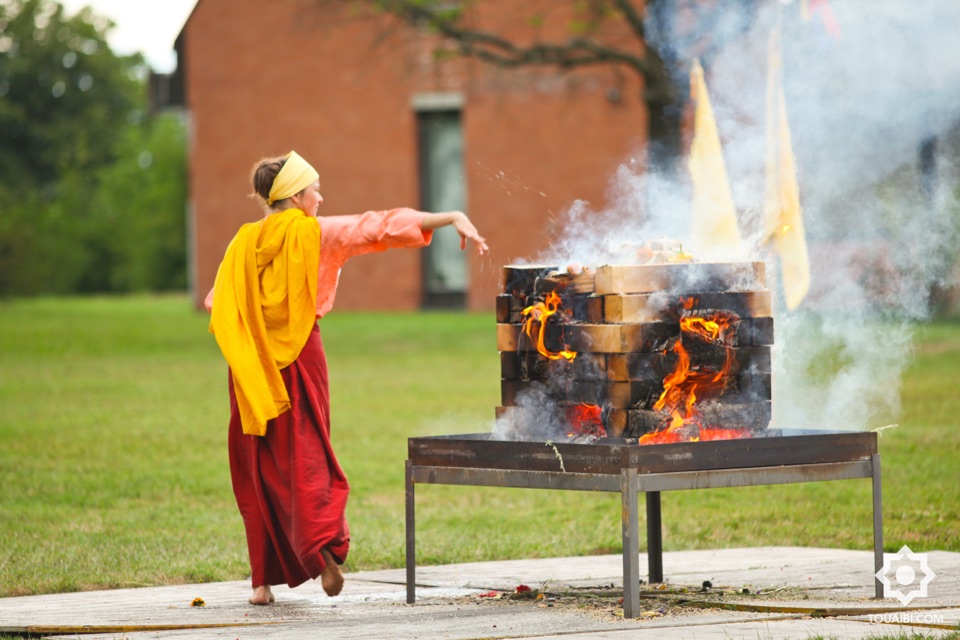
About
Fire Ceremony (Puja) at the RIPA International Center in Niederwangen near Bern, August 6, 2013.
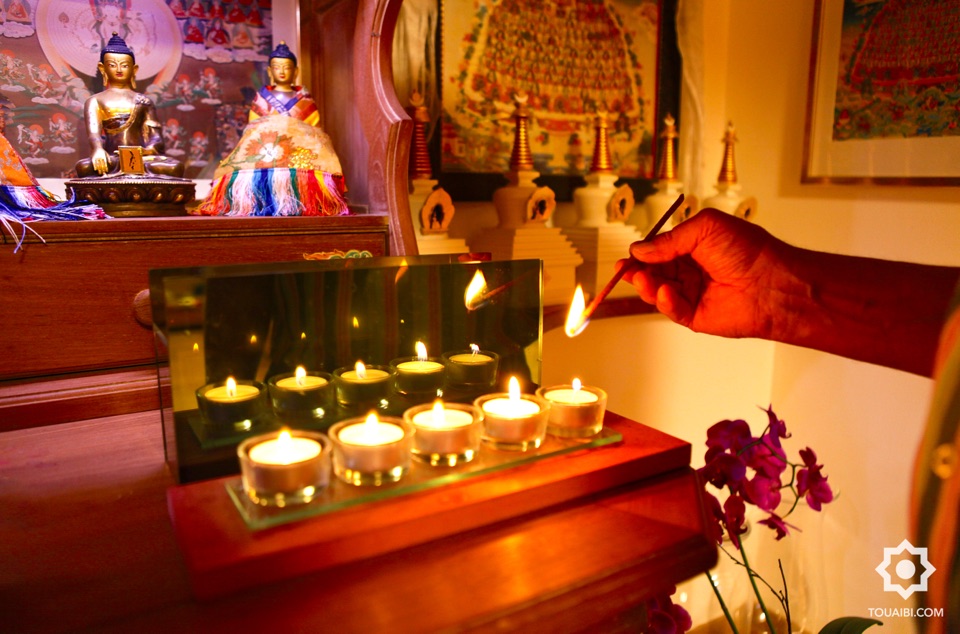
About
Offering light before meditation at the Thupten Jamtse Ling Buddhist center in Sorens.
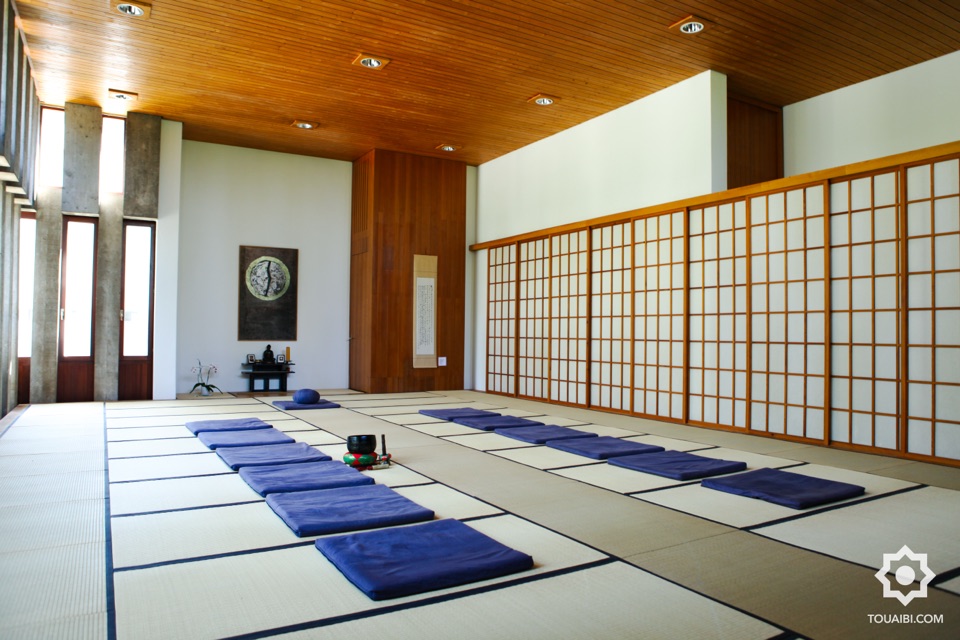
About
The Zendo at Maison Lassalle in Edlibach, central Switzerland. A recognized center for spirituality, dialogue and responsibility, run by the Jesuits.
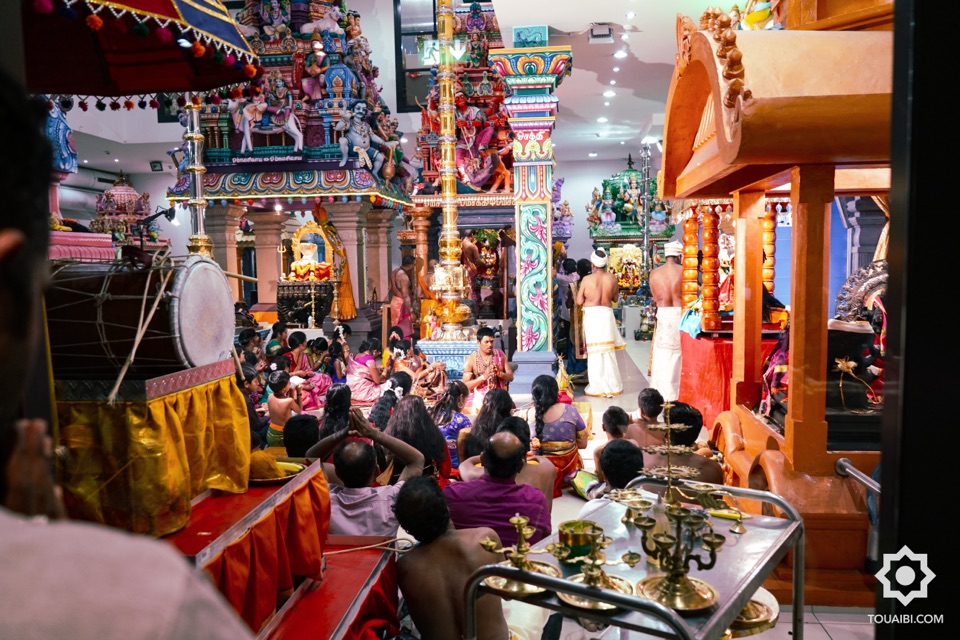
About
For Bernese of Tamil origin, the Shiva Temple “Arulgnanamigu Gnanalingesurar Tempel” is a central place for the preservation of religious and cultural traditions, as well as a place for exchange and encounter. Ceremony on November 6, 2016.
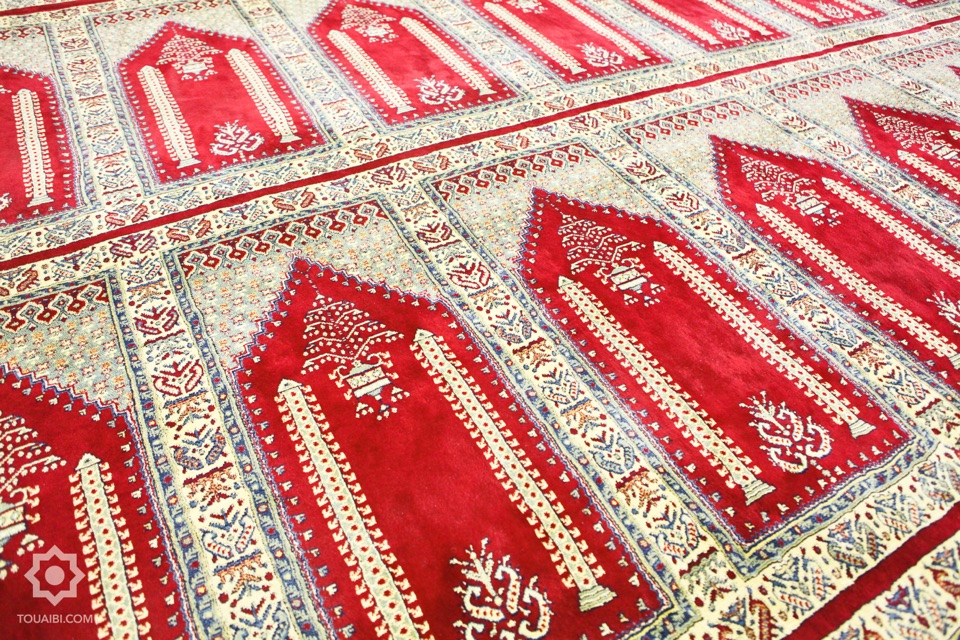
About
In Bulle's mosque, prayer rugs lined up in the direction of Mecca trace a sacred path. Silent witnesses to prostrations, they unite hearts in the same direction.
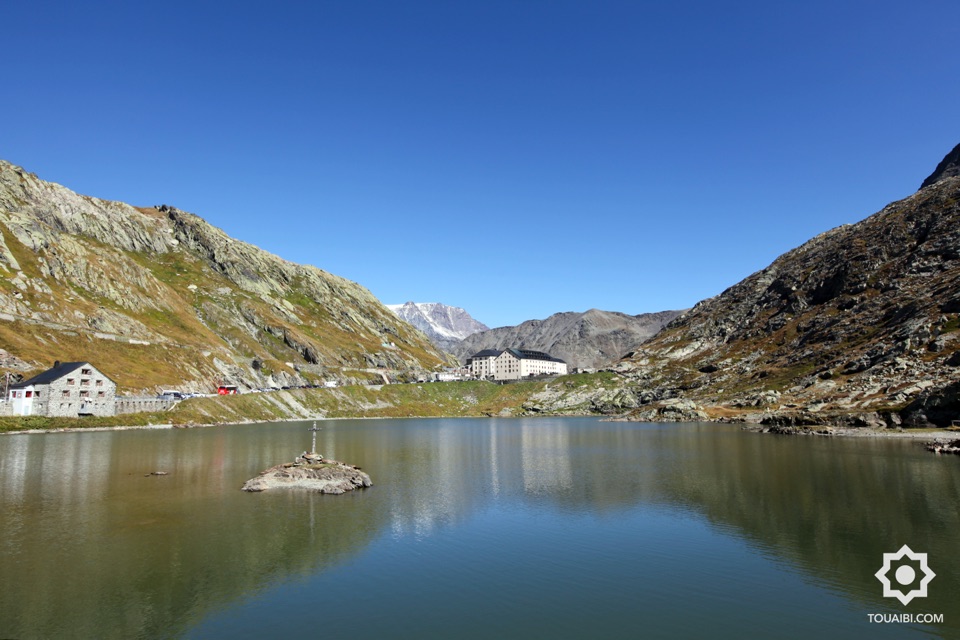
About
The Hospice du Grand-Saint-Bernard was founded by Saint Bernard de Menthon in 1050. It is located in the heart of the Alps, at 2473 m altitude at the summit of the pass. The hospice was built to help travelers.
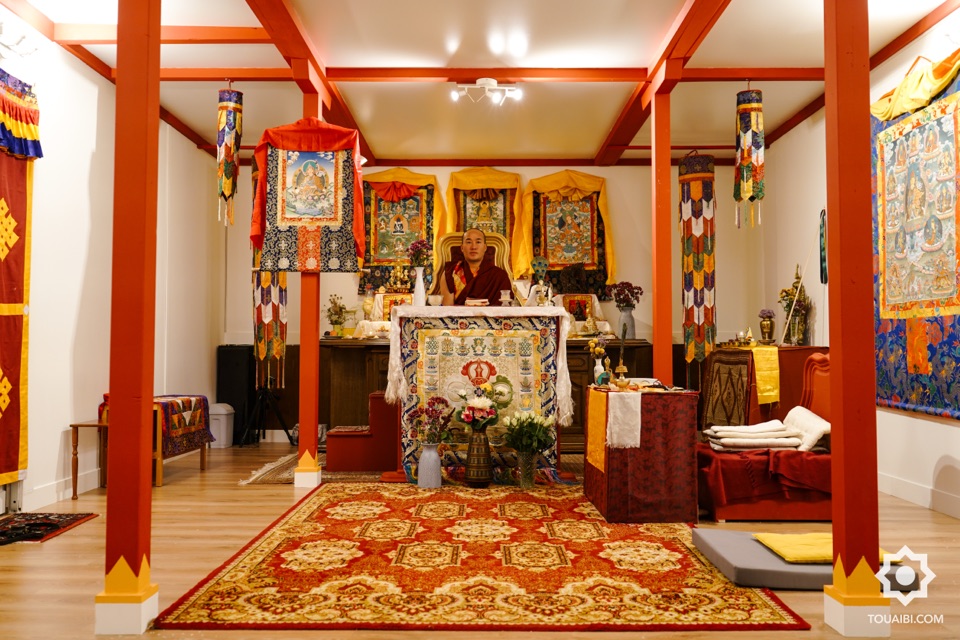
About
His Eminence the 16e Dzongthri Rimpoché - An exceptional presence in Martigny. Coming specially from Nepal to inaugurate the Vajradhara Dharma Centre in Martigny, this high Buddhist figure embodies the living transmission of Tibetan wisdom. Under his spiritual direction, the mission of this new temple is to spread the fundamental values of Buddhism. ‘The world needs compassion. Our mission is to spread compassion and kindness among all beings.’ A place where meditation and teaching come together to cultivate inner peace and the seeds of happiness.
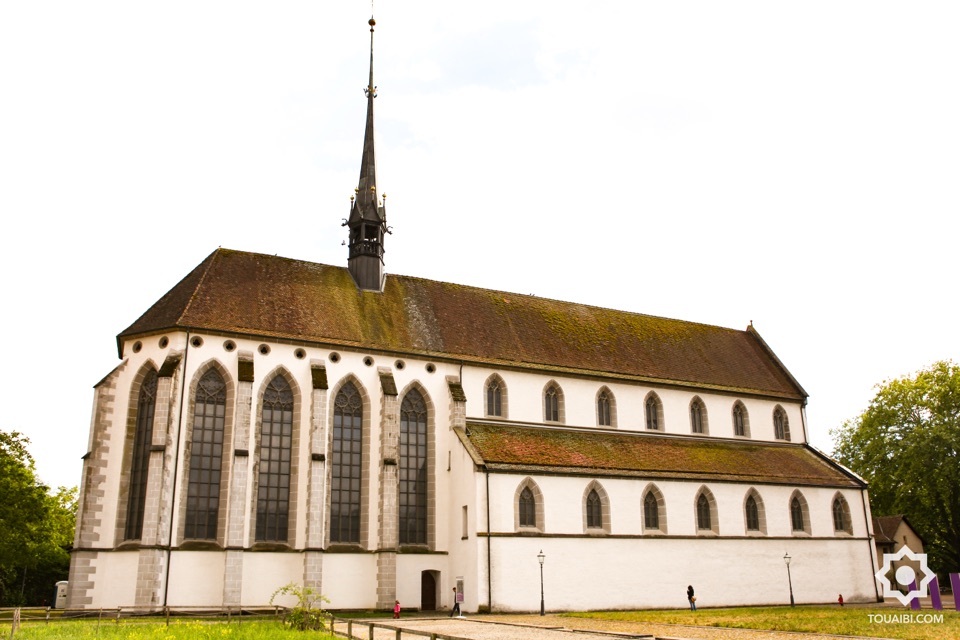
About
In the heart of the Aargau region, the convent church of Königsfelden is home to a little-known treasure: its stained glass windows, created between 1320 and 1360, are among the most refined jewels of European medieval art. And yet, unlike the cathedrals of Chartres or Cologne, their fame remains discreet. Their coloured light, spanning the centuries, vividly recounts the beliefs and soul of an era. The jewels of European glass painting, they have elevated this place to the status of a spiritual and artistic treasure. Like a book of stone and light, they taught the biblical stories to the illiterate faithful.
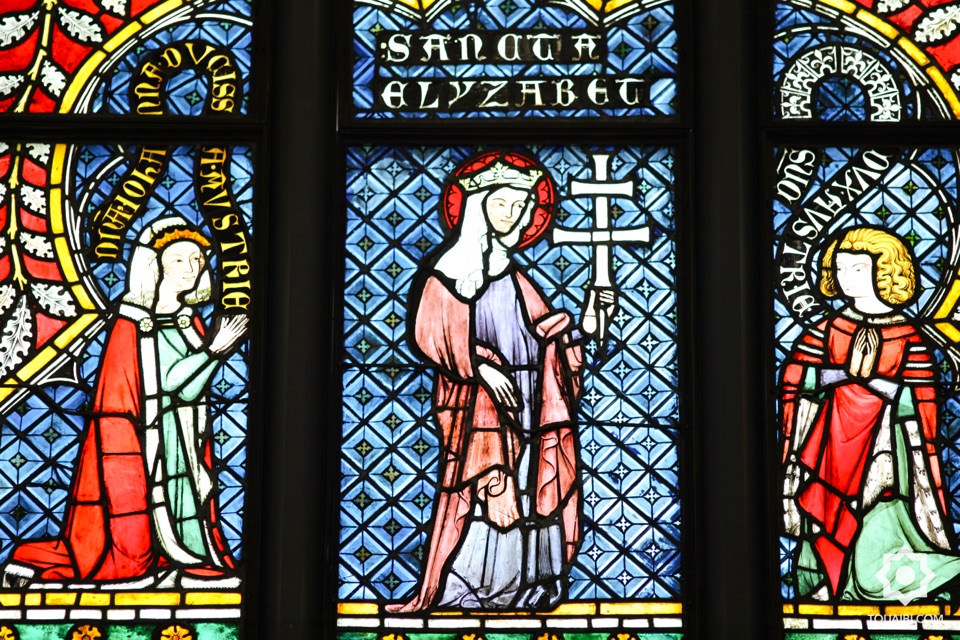
About
Stained glass window in the convent church of Köningsfelden.
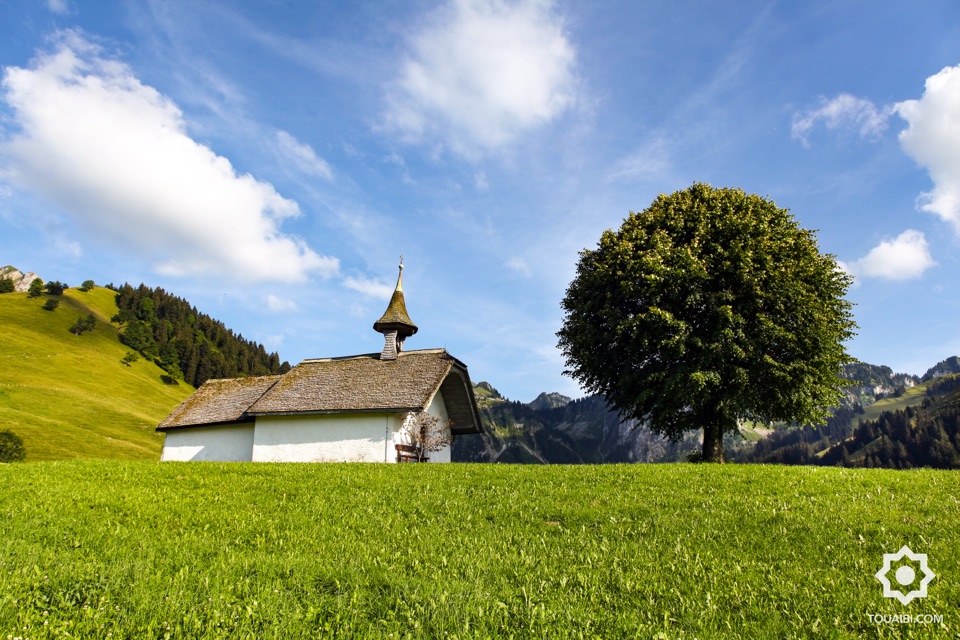
About
Chapel near Charmey, in the Gruyère region.
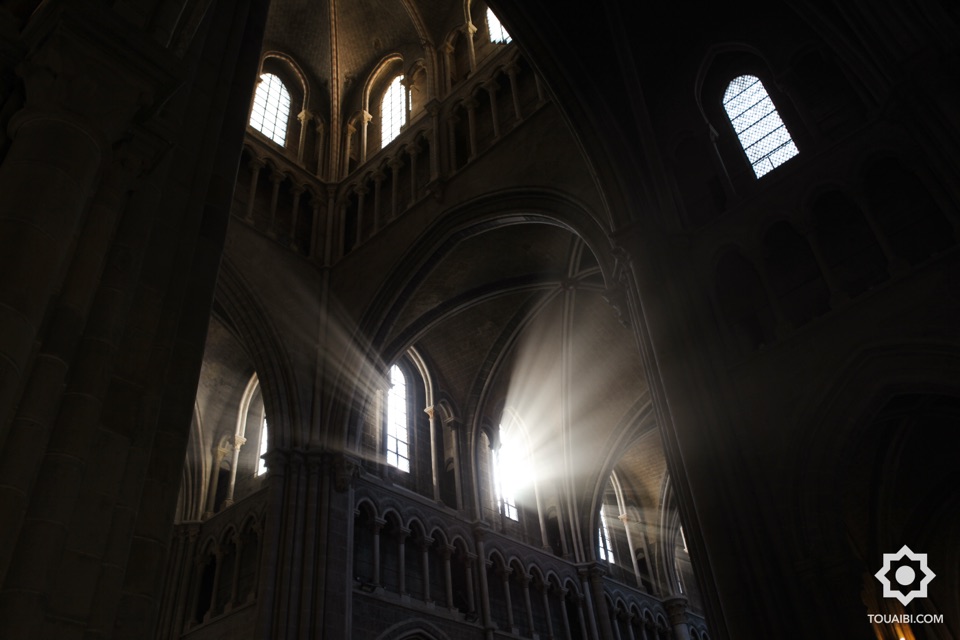
About
Inside the Cathedral of Notre Dame de Lausanne, a splendid Gothic edifice built between the 12th and 13th centuries. It was converted to Protestant worship in 1536. The cathedral watch perpetuates a 600-year-old tradition by announcing the time from 10 pm to 2 am.
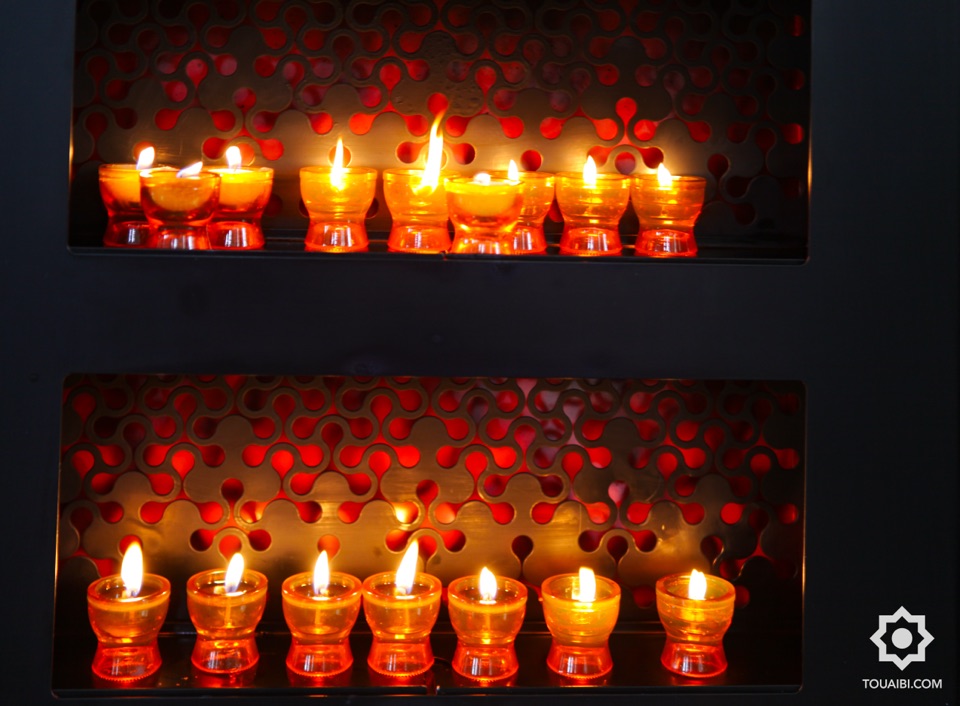
About
Candles are permanently lit at Flüeli-Ranft.
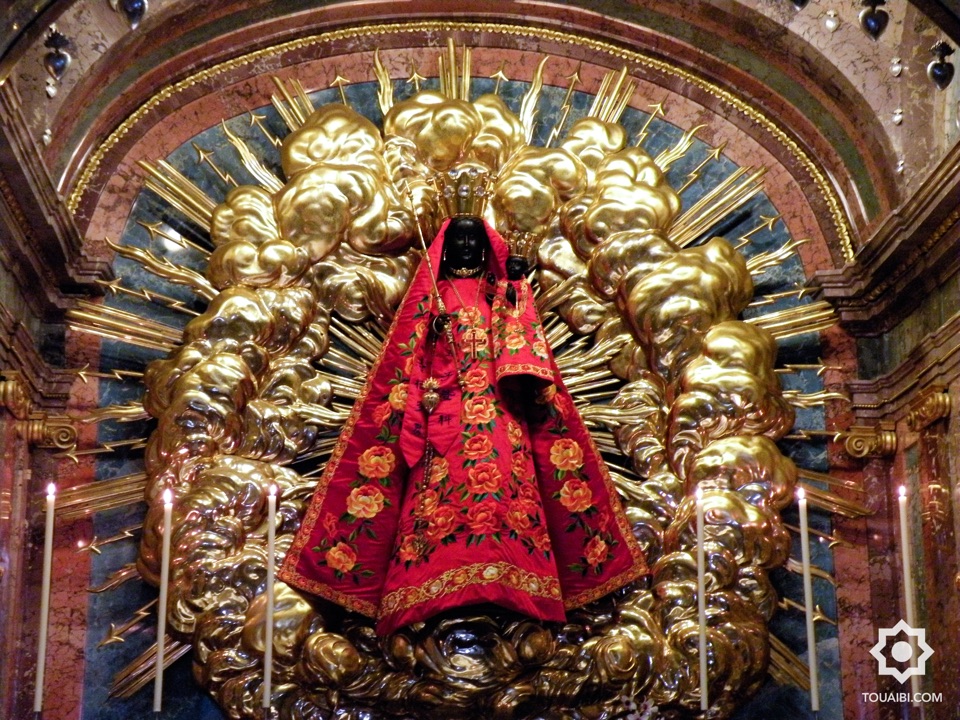
About
Einsiedeln, Switzerland's spiritual jewel, is the country's most important pilgrimage site dedicated to the Virgin Mary. For over a thousand years, this shrine has attracted pilgrims from all over Europe, bearing witness to an uninterrupted fervour since the Middle Ages. At the heart of the Baroque abbey, considered to be one of the most remarkable monuments of this style in the world, is the Chapel of the Graces. Its black marble houses the famous 15th-century Black Madonna, renowned for her miracles and healing powers. Every year, the abbey church of Einsiedeln welcomes an endless stream of visitors and pilgrims, who come to worship before this sacred icon and admire the architectural splendour of the site.
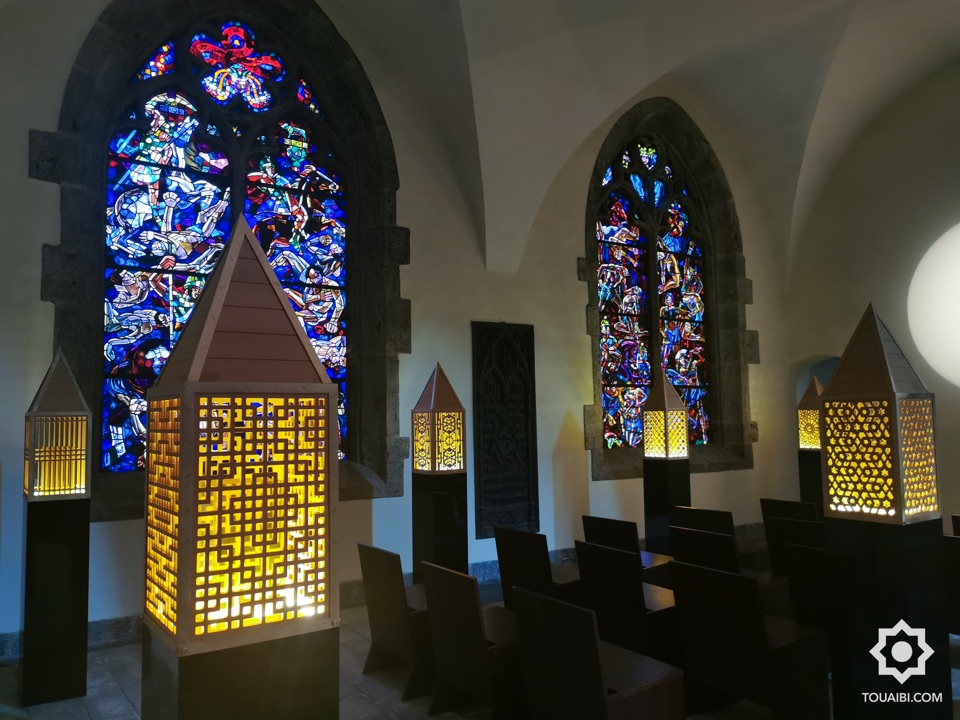
About
The Abbey of Saint-Maurice, a living jewel of spiritual history. Founded in 515 on the remains of an ancient sanctuary, the abbey has watched over the sacred relics of Saint Maurice and his companions in the Theban Legion for over fifteen centuries. These third-century martyrs refused to renounce their Christian faith, and their sacrifice here sealed the birth of a place of worship that is unique in Europe. More than just a monument, Saint-Maurice embodies an unbroken tradition: it is the oldest monastery in the West still in operation. Its stone walls, treasures of sacred jewellery and Gregorian chant perpetuate the legacy of the monks who have kept the flame of prayer burning here since the dawn of the Middle Ages. A site where the spirit of the builders of Christianity still breathes, today classified as a cultural asset of national importance.
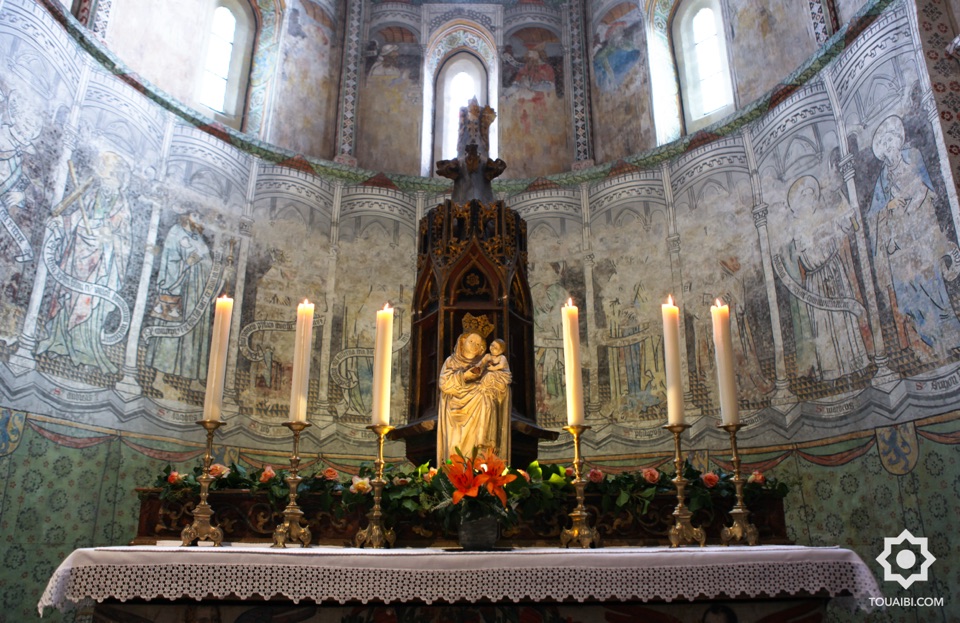
About
The Basilica of Valère, a stone sentinel that has watched over Sion for eight centuries, hides a rare pictorial treasure: its 15th-century frescoes, where saints and biblical prophets come to life under skies of Afghan lapis lazuli – a blue pigment more precious than gold in medieval times. These works of miraculously preserved colour are set against the oldest playable organ in the world (1430), whose notes still resonate within the walls. A place where sacred art, inspired by the faith of the builders, transcends the ages.
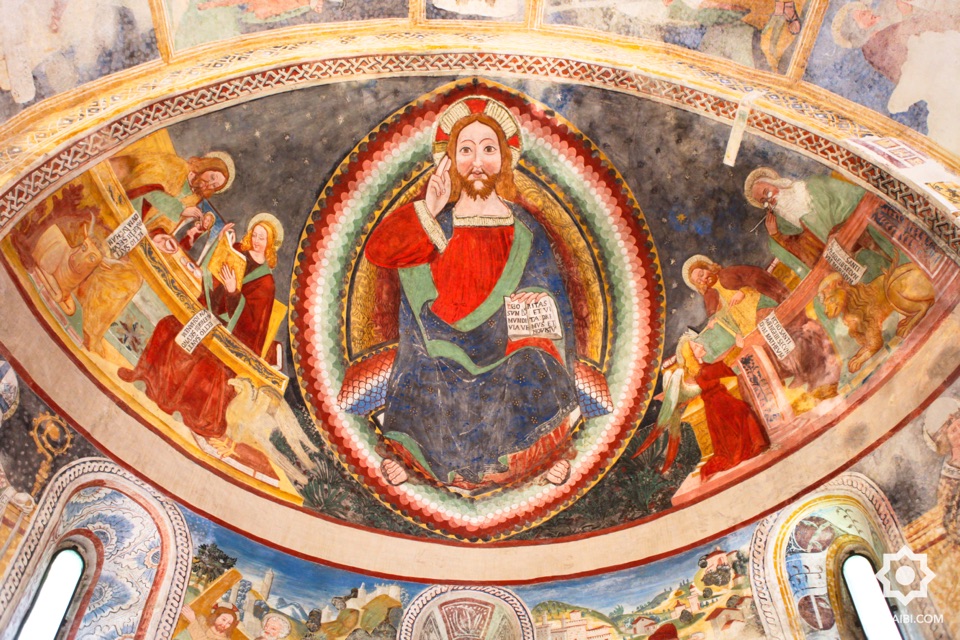
About
The church of San Pietro e Paolo in Biasca in Ticino is a jewel carved out of the mountain. Built into the rock in the XIIe century, this church, listed as a monument of national importance, dazzles with its architectural dialogue with the stone. Its earliest frescoes (dating from the XIIIe–XIVe centuries) display medieval art of rare authenticity. The visitor's journey becomes a pilgrimage: each step climbs the slope to reach the tabernacle, like a symbolic ascent where the hand of man and the breath of stone become one.

